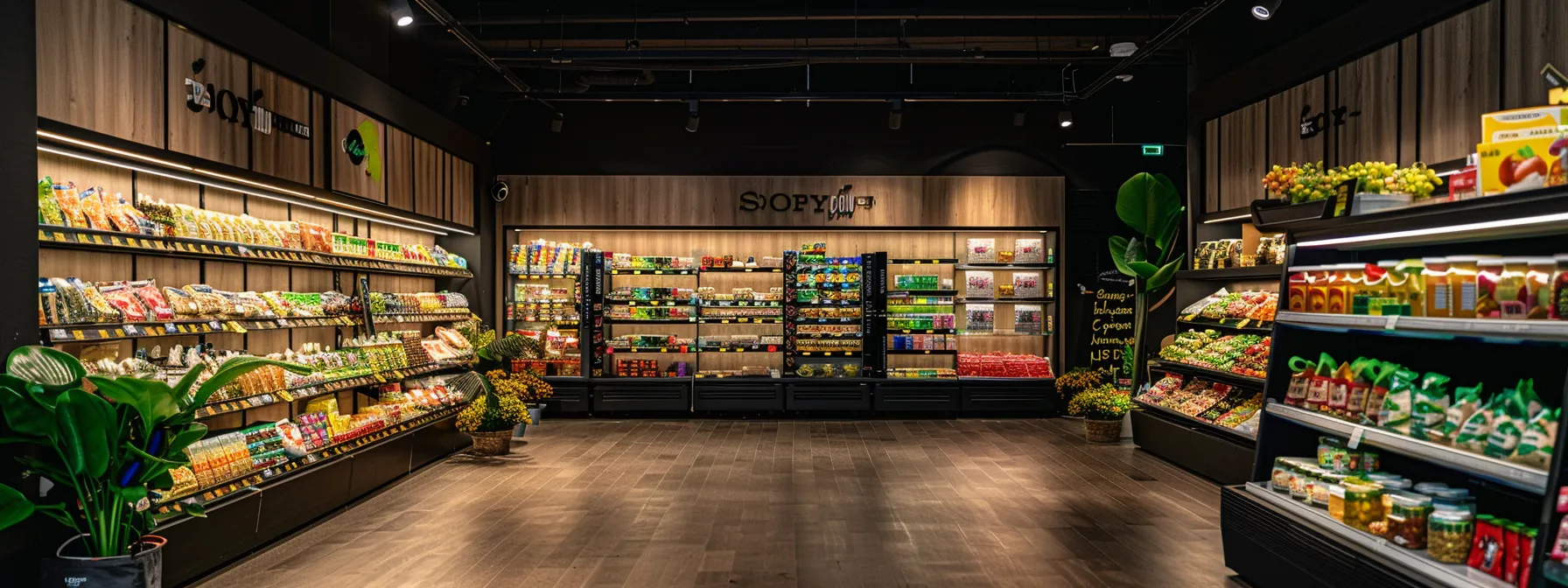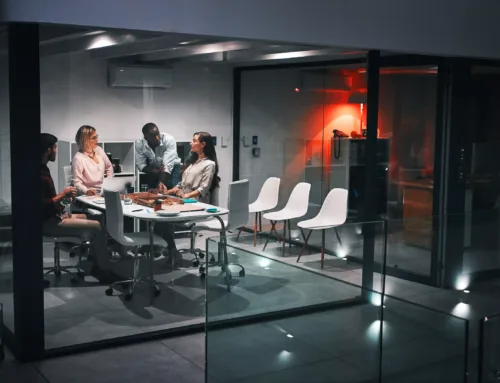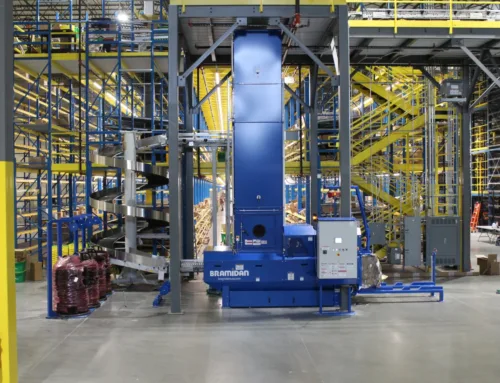
Retail units play a crucial role in boosting sales and attracting customers. At End2EndLogix, we offer products and services designed to maximize your retail space’s potential. Our expert team can help you create visually appealing displays that showcase your merchandise effectively. To learn more about our services, contact us today. In this article, we’ll explore five key strategies to enhance your retail units and drive sales.
Designing Retail Units for Maximum Product Visibility

Designing retail units for maximum product visibility is a crucial aspect of maximizing sales in your store. By strategically arranging your displays, you can capture customers’ attention and drive purchases. Two key elements to consider are optimizing shelf placement according to customer eye level and using lighting to highlight key products. These services can significantly enhance the visual appeal of your merchandise and increase its chances of being noticed and purchased.
Optimize Shelf Placement According to Customer Eye Level
Place your highest-margin products at eye level to maximize their visibility and sales potential. You’ll want to position impulse buys and popular items between waist and eye height, where customers are most likely to see and reach for them. Remember to consider the average height of your target demographic when determining optimal shelf placement for different product products and services categories.
Use Lighting to Highlight Key Products
Leverage lighting to draw attention to your key products and create visual interest in your retail space. Use spotlights or LED strips to illuminate high-margin items, making them stand out from surrounding merchandise. Consider varying light intensity and color temperature to create contrast and guide customers’ eyes to specific areas or products you want to promote. For more information about our products and services, contact us at End2endlogix.
- Install spotlights above premium products
- Use LED strips to highlight shelving units
- Vary light intensity to create focal points
- Adjust color temperature to enhance product appearance
Implementing Technology in Retail Displays

Integrating technology into your retail displays can revolutionize how customers interact with your products and streamline your operations. By incorporating interactive screens and digital price tags, you’ll create a more engaging shopping experience while simplifying inventory management. These technological solutions not only captivate customers but also provide flexibility in pricing and promotions, allowing you to adapt quickly to market changes and maximize sales opportunities.
Interactive Screens to Demonstrate Product Features
Install interactive touchscreens near your product displays to showcase features, specifications, and customer reviews. These screens allow shoppers to explore products in-depth, compare options, and make informed decisions. You can program the screens to display product videos, 360-degree views, and even virtual try-on experiences for certain items. This technology not only engages customers but also reduces the need for extensive staff training on product details:
- Display product features and specifications
- Show customer reviews and ratings
- Offer product comparison tools
- Provide virtual try-on experiences
- Play instructional videos or demos
Digital Price Tags for Easy Price Changes and Promotions
Implement digital price tags in your retail displays to streamline pricing updates and promotional offers. These electronic labels allow you to change prices instantly across your store, ensuring accuracy and saving time. You can easily adjust prices based on demand, competitor pricing, or special promotions without the need for manual relabeling. Digital price tags also enable dynamic pricing strategies, allowing you to optimize your profit margins in real-time:
- Update prices instantly store-wide
- Implement dynamic pricing strategies
- Reduce labor costs associated with manual price changes
- Ensure pricing accuracy across all products
- Display additional product information or promotional messages
Strategies for Effective Inventory Management

Effective inventory management is crucial for maximizing sales with your retail units. By implementing smart strategies, you can ensure your displays remain fresh and appealing while maintaining optimal stock levels. Two key approaches to consider are stock rotation principles and data analytics. These techniques help you keep your merchandise current and accurately predict demand, allowing you to make informed decisions about restocking and product placement.
Stock Rotation Principles to Keep Displays Fresh
Implement stock rotation principles to maintain fresh and appealing displays. Move older inventory to the front of shelves and place newer items behind them. This “first in, first out” approach ensures products are sold before their expiration dates and keeps your displays looking current. Regularly assess your stock levels and rearrange items to create visual interest and encourage customers to explore your entire product range:
- Rotate stock based on expiration dates
- Rearrange products to create visual interest
- Move slower-selling items to eye-level positions
- Refresh end-cap displays weekly
- Cross-merchandise complementary products
Using Data Analytics to Predict Stock Levels Accurately
Use data analytics to predict stock levels accurately and optimize your inventory management. By analyzing historical sales data, seasonal trends, and customer behavior patterns, you can forecast demand and adjust your stock levels accordingly. Implement inventory management software that integrates with your point-of-sale system to track sales in real-time and generate automated reorder suggestions. This data-driven approach helps you maintain optimal stock levels, reduce overstock situations, and minimize the risk of stockouts, ultimately improving your store’s profitability.
Enhancing Customer Experience Through Store Layouts

Store layout plays a crucial role in maximizing sales with your retail units. By carefully designing your space, you can create an environment that not only showcases your products effectively but also enhances the overall customer experience. A well-planned layout guides customers through your store, exposing them to more merchandise and increasing the likelihood of purchases. Additionally, creating comfortable spaces within your store encourages customers to spend more time browsing, which often leads to higher sales. Let’s explore two key strategies for optimizing your store layout: creating a logical flow and designing comfortable spaces.
Creating a Logical Flow That Guides Customers Naturally
Design your store layout to create a natural flow that guides customers through different sections. Use strategic placement of retail units to create clear pathways and lead shoppers to high-margin products. Consider using a circular or loop layout to encourage customers to explore the entire store, exposing them to more merchandise and increasing the chances of impulse purchases.
Comfortable Spaces That Encourage Prolonged Visits
Create comfortable spaces within your store to encourage customers to stay longer and browse more. Set up seating areas near fitting rooms or product demonstration zones, allowing shoppers to relax and consider their purchases. Use soft lighting and soothing background music to create a welcoming atmosphere that puts customers at ease and increases their likelihood of making a purchase.
Training Staff on the Power of Visual Merchandising

Train your staff on the principles of visual merchandising to maximize the impact of your retail units. Educate them on color theory, product grouping, and the psychology behind effective displays. Empower your team to make informed decisions about product placement and presentation, ensuring your store always looks its best.
Conduct regular workshops to keep your staff updated on the latest visual merchandising trends and techniques. Encourage them to experiment with different display layouts and share successful strategies among team members. By fostering a culture of creativity and continuous improvement, you’ll keep your store’s visual appeal fresh and engaging.
Implement a system for staff to provide feedback on customer interactions and preferences related to your retail units. Use this information to refine your visual merchandising strategies and tailor your displays to your target audience. By involving your staff in the process, you’ll create a more dynamic and responsive retail environment that drives sales.
Conclusion
Effective retail units play a crucial role in maximizing sales by enhancing product visibility, engaging customers, and streamlining operations. By optimizing shelf placement, implementing technology, and using strategic lighting, businesses can create visually appealing displays that capture customer attention and drive purchases. Proper inventory management and thoughtful store layouts further contribute to a positive shopping experience, encouraging customers to spend more time browsing and increasing the likelihood of sales. Training staff on visual merchandising principles ensures that retail units are consistently maintained and updated, creating a dynamic and responsive retail environment that adapts to customer preferences and market trends.
Share This Story, Choose Your Platform!
Get In Touch
Phone: (847) 722-6942
Email: sales@end2endlogix.com
Web: end2endlogix.com


